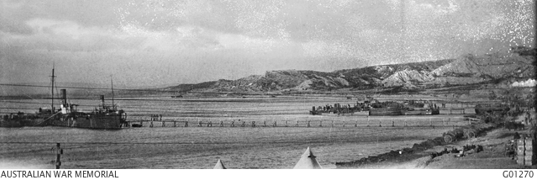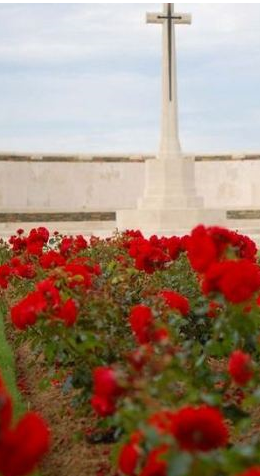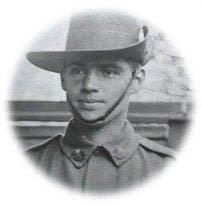Charles James Moore
Can you help? DNA search.
Do you know anything of Charles’ maternal relatives here in Australia or in Taunton Somerset with the surnames Durk(e) or Wescombe? As of 2024 180 of the 250 in the Fromelles mass grave have been identified through family DNA but we are still looking for suitable DNA for Charles Moore. Charles is one of the 14 Machine Gun Company soldiers still missing and we are very interested in locating DNA donors for this soldier because others from his company are now identified. None of his immediate family in Australia carry the much needed Mt DNA from his mother’s line, so we are looking at connections to grandparents and great-grandparents who came from the village of Taunton in the UK. See the DNA box at the end of the story.
This story is based on research material prepared by family member and then school student, Lachlan Moore, for the Frank MacDonald Memorial Prize. Lachlan was a 2016 prize winner and Corporal Charles Moore was brother to Lachlan’s great-great-grandfather. We have edited some of Lachlan’s published material to maintain our Fromelles focus and to include additional images where relevant.
Charles James Moore was an Australian soldier and not quite 23 years old when he was killed in the Battle of Fromelles on 19-20 July 1916. Charles was one of 1,917 Australian soldiers who were killed in this tragic conflict. Sadly, the resting place of Charles Moore and so many other brave men remain unknown but, due to the determined efforts of the army and many dedicated volunteers, there is great hope that the remains of Charles and other lost diggers will be recovered and identified.
Charles James Moore was born in 1893 in Leichhardt, Sydney to William George Moore (1859-1900) and Bessie Ellen Moore, nee Wescombe (1863-1940). Charles was just six when heartbreak struck the Moore family. His newborn sister, Eileen, died in early February 1900 and only two weeks later his father died aged just forty, leaving a widowed Bessie unable to raise her five surviving children.

Charles and each of his three older brothers were raised separately, while Alma, the youngest surviving child, remained in her mother’s care until entering boarding school. The surviving members of the Moore family do not know who raised Charles. However, it is known that he was educated at Chatswood Public School and later employed as a warehouseman by Sargood Bros. in Sydney.
Despite the rupture to the family caused by his father’s early death, it is evident that Charles remained in contact with some of his nuclear family. Before leaving Australia and during his time on active service abroad he wrote to his oldest brother, Guy Moore, and to his cousin, Jack Paynter. In addition, Charles’ military records include a will which names his sister, Alma, as the sole beneficiary to his estate and his mother was named as next of kin.
Answering the call – just after the ANZAC landing
Military records show that on 20 May 1915, Charles, at 21 years of age, enlisted in the Australian Military Forces at Liverpool, New South Wales. He was appointed to the 1st Battalion (7th reinforcements) and began initial training in Sydney.
On 7 July, exactly a week prior to embarking on the HMAT A67 Orsova, bound for Alexandria, Egypt, Charles wrote to his brother, Guy, informing him that his battalion was:
"…going away next week for certain but am not telling Mother or Alma, as it will upset them. ...Am now feeling very fit and will be glad to get away, and only wish you were coming with me."
A Scrap in Gallipoli becomes Bloody Hell
On 18 October 1915, the 1st Battalion boarded the HMT Borda in Alexandria for Gallipoli and Charles wrote to his cousin, Jack Paynter, notifying him:
"We push off tomorrow for God knows where –probably the Peninsula. Am very fit and looking forward to a scrap, and the sooner it comes the better I like it. Egypt is a rotten hole after you have been in it for 10 weeks."
He was evidently oblivious to the carnage he would experience on the Peninsula and on 4 November, his understanding of warfare changed forever as he and his comrades were introduced to the fighting.
After almost three weeks in the trenches, Charles wrote again to his brother, Guy, reflecting on his new understanding of warfare. While remaining uninjured, he reports that he had one or two near misses and described trench life as ‘not bad, but it’s not too good.’ He remarked that shells were ‘a frequent, usual disruption to the day.’ ‘You hear a shell coming and somebody will sing out and down we all go then once again, resume your work as if nothing had happened.’ The first few days ‘scared hell out of me but am now used to it.’ Charles commended the work of Australian soldiers while minimizing concerns for his own safety:
"I wish you were here to see the ground our Boys had to get over at the start. They did wonderfully well. Don't take too much notice of the gaudy pictures and stories you see and read about as they are very far-fetched ... (I) have not yet seen any Turks, as in trench warfare you do all your observing etc. through loop holes"
In this same letter, Charles fondly acknowledged the news he had received of the birth of Guy’s son, and his own namesake, Charles William Kelso Moore, born 16 August 1915 a month after Charles left Australia. He said he was:
"..mighty pleased by the Honour conferred in me.... see that no thought of war enters his head as it did mine as war is Bloody Hell multiplyed (sic) by Bloody Hell"
Wounded in Action
On 10 December 1915, just as the evacuation of Gallipoli was commencing, Charles incurred a bullet wound to the head. He was admitted to the No. 1 Casualty Clearing Station but re-joined his Battalion the next day. Just ten days later, the Allies completed the evacuation of Gallipoli and Charles boarded H.M.T. Huntsgreen either in the late hours of December 19th or the early hours of 20 December 1915. He disembarked at Alexandria, Egypt on 28 December 1915.

Egypt – training
Troops returning from Gallipoli were scheduled for further training but records show that from 23rd until 25th January 1916, Charles Moore was absent without leave from a camp at Tel el Kabir, in Egypt. He consequently received seven days of Field Punishment and forfeited three days’ pay. There is no evidence to suggest why Charles was absent without leave. One might only hope that he enjoyed these days away from the camp, as he had little time remaining to enjoy his young life.
On 13 February 1916, Charles was transferred from the 1st Battalion to the 53rd Battalion. This was part of the re-organisation of the Australian forces after the losses at Gallipoli with battalions re-formed with combinations of newly arrived reinforcements together with Gallipoli veterans like Charles.
In early March, Charles began training at the School of Instruction in Zeitoun and was transferred from the 53rd Battalion to the 14th Machine Gun Company on March 11th. Charles took the opportunity to write to his brother, Guy, a letter delivered by hand of a fellow soldier and friend, Joe Chisholm (service number 2434), who was being invalided back to Australia. He wrote:
"... at present am in the School of Instruction going through the Machine Gun Course but by the time you get this will be with my unit and probably on my way to France as we are going there for sure. I am doing pretty well in my exams ... 97, 100 and 98 out of possible 100 in three exams. ...am trying to get good marks and so score an instructor’s certificate, which might bring me a couple of stripes. The wound which seems to have stirred up so much feeling has been healed up for months."
Despite his optimism, Charles requested that Guy convey regards to friends at home including his infant namesake. He also instructs him to ‘let the warehouse know I am not dead.’ He reflected on soldiering as ‘a wonderful experience but a trifle monotonous’ and anticipated ‘things will liven up in France, in fact will probably get a little more than I want.’ A letter delivered by hand perhaps provided Charles with the opportunity to relate his experiences without censorship, as he refers to the Machine Gun Company in brackets as the ‘Suicide Squad’ and reflects candidly on his experience at Gallipoli:
"On the Peninsula things were pretty warm at times especially one night they threw bombs into me on an advanced post. The chap along side of me was killed."
Charles succeeded in his goal of obtaining a couple of stripes and was promoted to corporal on 26 April 1916.
Somewhere in France
On 19 June, Charles embarked from Alexandria, Egypt and arrived in Marseilles, France on 25 June. On 16 July 1916, Charles wrote again to Guy. Addressing his letter ‘Somewhere in France’, he explained that it was ‘Just a note to say something will be doing here shortly and yours truly will be in it. Will write again when the stunt is over, providing everything pans out OK.’
This ‘stunt’ would turn out to be the Battle of Fromelles. An attack designed to distract the attention of German forces away from the nearby Somme offensive. This attack lasted just 14 hours and resulted in an overwhelming victory for Germany. It was undoubtedly the worst day in Australian military history, with 5,533 casualties being incurred by the Australian Army including 1,917 deaths and 470 soldiers being captured as prisoners by the German forces. This ‘tactical abortion’ as senior military officer General Harold Edward ‘Pompey’ Elliot described it, concluded with no land being gained, while Australia lost a quarter of the number of soldiers killed in the eight-month Gallipoli campaign in 4 hours.
Heart-breakingly, this ill-fated campaign on 19-20 July 1916 cost Charles his young life.

Family back home
The amount of information exchanged between those on the warfront, the war administration and the soldiers’ kin is staggering. Lacking modern day communication technology, delay, error and confusion in the communications between these three parties was an inevitability.
The first delay had occurred back in December 1915 when news of Charles’ wounding at Gallipoli was not communicated to his mother until almost a month later. The military communication was blunt and conveyed minimal information, much to the consternation of his family. Charles refers in his letter dated 22 March 1916 to the feeling this stirred up and states that the wound ‘has been healed up for months.’
Charles’ service record reveals that news of his death was sent in mid-August but there was confusion due to an error in the formal notice. His uncle, Charles Ernest Moore, wrote from Adelaide on the 24 October and 2 November to seek clarification. The military reply from an unsigned Major in the Defence Base Records confirmed that:
No. 2392 Private C.J. Moore, 14th Brigade Machine Gun Company (formerly 53rd and 1st battalions), is reported as having been killed in action on 20 July 1916.
As you state that the official advice received by next-of-kin quoted (the incorrect) regimental No. 2492, the telegram had evidently been mutilated in transmission.
These administrative errors must have caused additional heartache for the Moore family. Records also show that it was almost seven years after Charles’ death before Bessie received all of Charles’ military medals.
Charles was originally commemorated at the Villers-Bretonneux Memorial along with thousands of other soldiers whose place of burial was unknown. In recent years, however, Corporal Charles Moore’s name has also been added to the V.C. Corner Australian Cemetery and Memorial to honour him and the other soldiers who fought and died in the Fromelles campaign.

The Moore family today
Lachlan Moore, then still at school, wrote the following tribute to Charles:
"While researching Charles, I feel as though I have adopted him as my friend and my hero. He had a great life ahead of him; he may have had a family of his own. He was just 23. The First World War came at such a great financial and political cost to so many nations, but no financial, political or tangible cost from this war could come close to its monumental human cost. That cost can never be justified.
Charles Moore was just one man, one of the 17 million lives that the Great War stole, so in the scheme of things, when attempting to contemplate such colossal statistics, it may seem as though it matters little. The truth is it matters more than anything, for lives can never be valued nor repaid. No one can ever give Charles his life back, nor can those left behind ever see their son, brother, uncle, nephew again. What these men and women had to go through will never be vindicated nor redressed. What we can do, and what we must do, is tell the stories of the men and women who went through this pain. Empathise with, salute our military heroes, past, and present and most importantly, we must listen to their stories.
Crucially, we must take action to prevent anything like this happening again. We have failed with this several times in the past, but we cannot fail again. The price is too high and the memory of men like Charles too dear. "
Lachlan also referred to the search for DNA donors to determine if Charles might be one of the unidentified soldiers buried in the Pheasant Wood cemetery at Fromelles. A willing donor was quickly found on the male line but the search continues to find a donor on the maternal line, Bessie’s family - the Wescombes who originated in Somerset in England. Lachlan commented on this search:
"Should the DNA prove that this was indeed Charles final resting place, it will give finality to the story of Charles James Moore. It will also give the broader Moore family and I a feeling of comfort, gratitude and foremost certainty that this brave soldier would have his own place for us, to now and in the future, reflect on his life and sacrifice. Lest we forget."
DNA donors - specifically 2 samples of Mt DNA - are of vital importance and are sought for
| Soldier | Charles James MOORE 1893-1916 |
| Parents | William George MOORE 1859-1900 born Sydney, NSW | ||
| and Bessie Ellen WESCOMBE 1863-1940 born Taunton, Somerset |
| Grandparents | |||
| Paternal | Charles Kelso MOORE and Jane Emily DAVIS | ||
| Maternal | Charlotte DURK(E) 1829-77 and Charles WESCOMBE b. abt 1829 Both from Somerset, England | ||
| They had 3 daughters – Amy, Bessie and Louise |
- We specifically need to locate folk who have an uninterrupted line back to Charlotte’s mother, Mary Anne SHEPHARD 1813-1886, who lived in Taunton, Somerset. We would like to contact folk who have some knowledge of the descendants of the many daughters of Mary Ann. .

